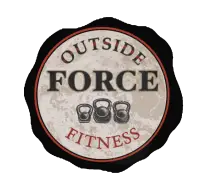With all of our diet problems, the question of “What should we really be eating?” comes up a lot. Here’s what works with over 90% of the people that I’ve trained. Whether you’re trying to get healthy, improve energy levels, lose weight or put on muscle, this is what I have found to work.
What Is the Glycemic Index?
First, let’s start with some terms:
Glycemia refers to the glucose (a type of sugar) that is is in your blood. The prefix glyco- means glucose and suffix -emia means a substance that is in the blood.
Index just means a list of items in order.
There is basically a theoretical list of foods that are put in order by how much they affect the amount of sugar in your blood. They are given a number between 1 and 100 which says how fast they get digested and make it to the blood to raise your blood sugar.
What Is the Difference Between Glycemic Index and Glycemic Load?
Glycemic load takes into account how much glucose will eventually make it into your blood. It is a measure over a longer period of time.
This article focuses mainly on glycemic index. I only bring up the glycemic load aspect because it does exist, and some doctors will tell you to think about it in conjunction with glycemic index and others won’t.
I’m simply explaining what has worked for me and the people that I’ve trained throughout the last couple of decades. I point them to the direction of foods low on the glycemic index.
How Does Eating Foods Low on the Glycemic Index Help Lose Weight?
Eating foods that are low on the glycemic index is very important if you want to lose weight.
When we eat foods that make our blood sugars high, we release a hormone called insulin. Insulin is a messenger to the cells that says, “Pull the sugar out of the blood!” If your blood sugar is allowed to get too high, it becomes a problem for your brain. In fact, if it goes too high or too low, you’ll go into what they call a “diabetic coma.”
So insulin (just a messenger), tells cells to absorb what they can.
The problem with this is that, if you want to burn fat, it won’t be happening when insulin is in the environment. You just don’t burn fat when insulin is present.
So in order to lose weight, you need to orient your diet to foods that do not cause a spike in insulin. Those foods are low on the glycemic index.
Should Everyone Eat Low-Glycemic Index Foods?
It is hard to say it is for everyone. But I would say yes to this population.
This population is different from nearly every other one in history due to the amount of sugar available to us. 99% of people I work with could do with eating less, so my answer is to encourage them to eat low-glycemic foods.
Even if they are fit, most of us are going for those six-pack abs. And in order to do that, you’ve got to burn some fat. And in order to burn some fat, you have to eat low-glycemic foods!
So I’ll go out on a limb here and say “Yes, everyone should eat this way.”
Because I would be 99% right.
Does Eating Low-Glycemic Index Foods Lower My A1C?
Okay, so, new term here – A1C.
The A stands for adult. It refers to a change in your blood cells that happen at about 6 months of age and after that point, they are all Type A.
The number 1 stands for which type of hemoglobin blood cells. This is further broken down into 1a, 1b and 1c, but about two thirds of your red blood cells are 1c.
So that is where you get A1C. It simply names the specific type of blood cell that is being looked at.
This blood cell lasts about 3 or 4 months. The higher your blood sugar levels, then the more of these blood cells will have sugar stuck to them. If your blood glucose levels have been lower, then they won’t have as much.
This test is good because it tells you what’s been happening with blood sugars over the recent months with any individual.
A doctor could test your blood sugar levels right then, but if you just ate a piece of candy, it would be higher than normal.
What Happens if I Eat Low-Glycemic Index Foods for Six Months?
Well, I can’t say exactly what is going to happen to you because you are different from everyone else.
But I can say that for most people, they will see an increase in energy. When you stop relying on sugar in your daily food, then your body has to make energy itself. It is good at this and because it is always working, you’ll have plenty of energy.
Less energy ups and downs. Sometimes we feel energetic and sometimes lethargic. For most people I have dealt with, this is solely based on their blood sugar levels.
Imagine having a steady flow of energy that rarely wanes. It is just there in the background ready to be used at a moment’s notice. That’s what it is like to have normal blood sugars. You can hop up off the couch and go for a run any time. You don’t get starving hungry. You don’t pass out after a meal.
After six months of eating low-glycemic foods, I see people with a ton of energy to burn in the gym and in life. They don’t poop out. They don’t come home from work and slouch on the couch or on the recliner.
They usually come right to the gym and burn all of this energy their body has made for them.
List of Low-Glycemic Index Foods
To be honest, I don’t have a good resource to refer you to.
Lots of these lists I look at have all sorts of breads and cereals listed as low-glycemic foods. I also have my clients eat low-carbohydrate foods. It’s not a sin to eat carbohydrates, but they just turn to sugar.
I want your body to be non-reliant upon carbohydrates or sugar taken in by your mouth.
So be careful of these foods that have 20 carbohydrates but are “low on the glycemic index.” These have a high glycemic load (if you remember the term from earlier).
Check into foods to see where they are on the glycemic index and how many carbohydrates/sugars they have.
Weaning Yourself Off Carbs
My approach is twofold: don’t spike your blood sugar and limit the carbs/sugars you take in on a regular basis. This forces your body to produce its own.
Your body will adjust. If you cut all carbs at once, your body will feel the adjustment all at once and it may cause you to be fatigued, lethargic, upset, etc. Just do it on an appropriate gradient. But do it.
The kind of low-glycemic foods that I’m talking about are:
- spinach
- lettuce
- broccoli
- almonds
- avocado
- most nuts
The boring foods are typically low-glycemic foods. But look them up first.
Start of rant: As a short note on the state of nutrition these days: it’s totally screwed up. For example, the government says that 90% of Americans don’t get enough dairy. Who on earth ever decided that humans need to drink milk from a freaking cow?
It just isn’t logical. I have taken tons of nutrition courses and classes. I have read even more books on the subject. I have also had my clients to experiment on to see what works.
For nutrition, what works is usually not mainstream. It’s been that way for the last 20 years in my own personal experience, and I’m sorry for that. We have a nation that is mostly overweight. I see it as intentional. End of rant.
But on to a very important point…
The Cake Trick!
Sometimes life sucks and puts a cake in front of you. This wouldn’t normally be a problem, but it always happens when you are trying to lose weight.
So here’s the trick.
Eat the boring foods first. These are usually the low-glycemic foods. The chicken breast, the salad (with oil as dressing) and the green beans. Eat those slowly and deliberately. Chew thoroughly (you’re buying yourself time). Then you can have your cake.
If you do it in this order, you will not need to finish the whole cake. You could have two spoonful’s and be satisfied.
But if you eat the cake first or along with the other food, then the whole thing is going down.
LET’S TALK ABOUT QUANTITY AND GOING HUNGRY
So let’s get into the subject of how much you eat.
Since I’m giving sound nutrition advice, I would say: don’t to eat past the point of being satisfied. Satisfied, not full. If you’re satisfied, you’re no longer hungry.
Many of us are afraid of hunger and an empty stomach. That’s fairly rational given that our bodies don’t want to starve and die, but some have taken it to a total extreme where anytime they can feel any sort of emptiness in their stomach, they start whining about food.
I would also say don’t let yourself get too hungry. However, this is a very subjective thing if some of us can’t tolerate the slightest bit of hunger.
To get a feel for what hungry actually is, let yourself go without food for a while. Your body will be forced to utilize stored energy and, in the meantime, complain like mad. The less trained your body is in reaching into its own stores, the harder this will be.
One of the benefits of intermittent fasting is that your body has to think on its toes and switch modes. Like “Oh snap, there’s not actually any food around. Shut down all unnecessary systems and begin to pull out the reserve stores.”
You actually do want to have this ability in case you ever find yourself without food. It is also good for health reasons because your body should be able to do it.
Conclusion
Most of the time I find myself training a person who’s eaten too much sugar for too long and is still on it.
The guidance to “eat low-glycemic foods” is almost always spot-on without even looking at who I’m talking to. Of course, I look. Sometimes I’ve got an athlete whos metabolism is humming. Then I get all excited because I get to train someone to levels of fitness rarely seen.
But I specialize in your average Joe. Athletes are easy. They’ve got the basics all down and usually have few actual concerns.
The real tough ones are your everyday people with silent diseases, bad habits and a general unawareness of what is going on with their bodies. As a trainer, I have to be aware for them and then bring their attention to the important things.
But that is totally fine with me. I like challenges. And I hope that this has brought your attention to the foods you eat and helps you break some bad habits.


